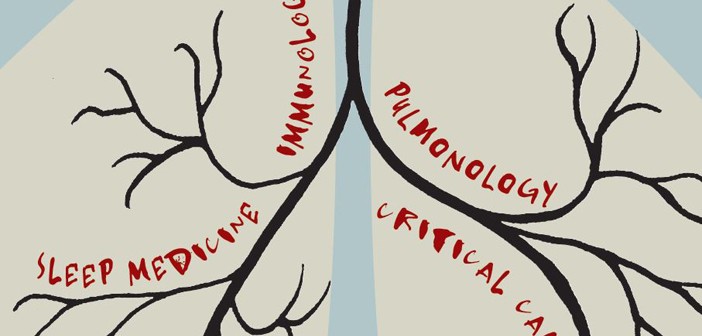A new respiratory disease group unites investigators across disciplines with a common goal.
Tens of millions of people died in the influenza pandemic of 1918. People were dying so quickly that there was a shortage of coffins and grave diggers, and funerals had to be limited to 15 minutes.
But it wasn’t the flu itself that killed most of those people. “In the 1918 flu, it’s thought that more people died of bacterial infections following the flu than of the primary flu infection,” says Amanda Jamieson, PhD, assistant professor of molecular microbiology and immunology.
Medicine has advanced since 1918, but the one-two punch of bacterial infection on top of a viral infection still kills. “It’s still happening today,” Jamieson says. “Bacterial pneumonia following flu is a really common complication.”
Jamieson’s research explores why this combo is so deadly. In a recent study, she infected mice with either the flu, a weakened strain of legionella bacteria, or the flu followed by legionella a few days later. The mice could successfully fight off either the flu or legionella alone. But legionella infection following the flu was a death sentence—all of the coinfected mice died within a week.
Surprisingly, Jamieson and her colleagues determined that the mice got sick from the secondary bacterial infection not because their immune systems were compromised by the flu infection but because their bodies couldn’t repair the damaged lungs. When she gave the coinfected mice a growth factor that increased tissue repair and decreased inflammation, survival rates improved. Now Jamieson is working with her students to figure out why this happens at the molecular and cellular levels.
The basic research done in Jamieson’s lab has direct clinical relevance. “It’s pretty well known that there are all these bacteria resistant to antibiotics, and it’s been shown recently that antivirals aren’t really that useful for fighting flu,” she says. “An anti-inflammatory or tissue repair treatment … could be an avenue of therapy for viral bacterial pneumonia.”
This sort of groundbreaking translational research is precisely the goal of a new interdisciplinary group, Brown Investigators of Respiratory Diseases (affectionately called BIRDs). A closer look at some of the group’s work shows that Jamieson is not alone in her success: BIRDs is really taking off.




